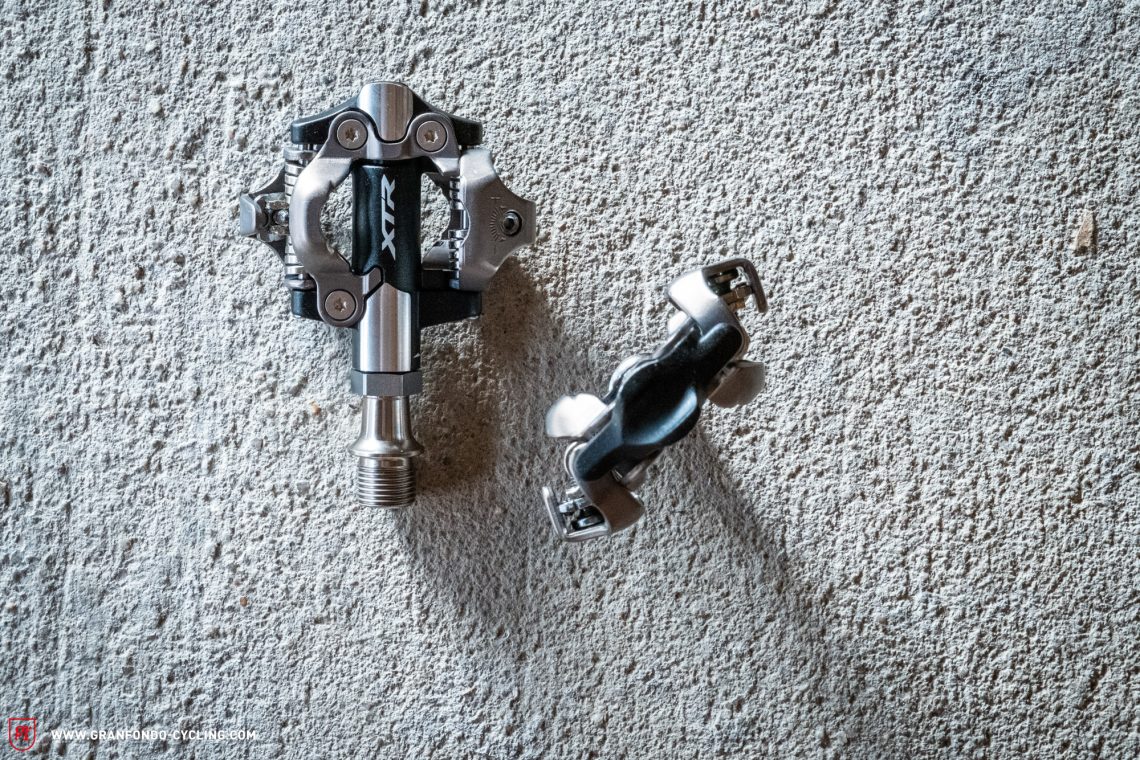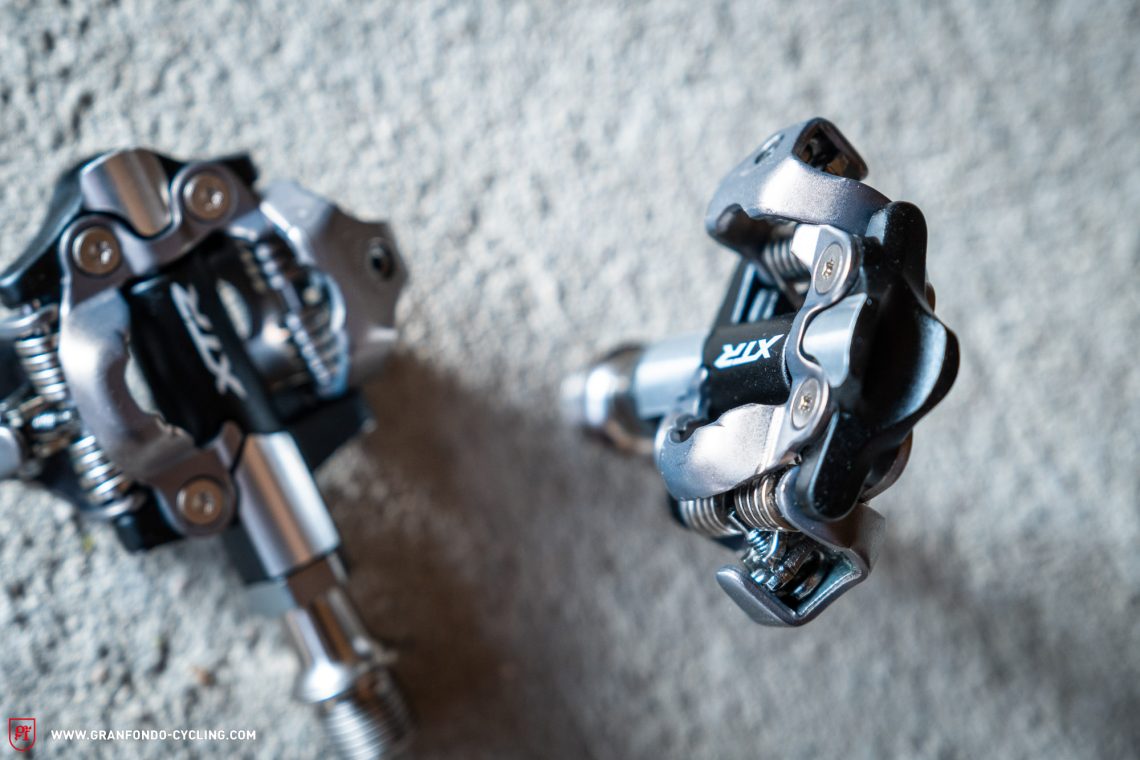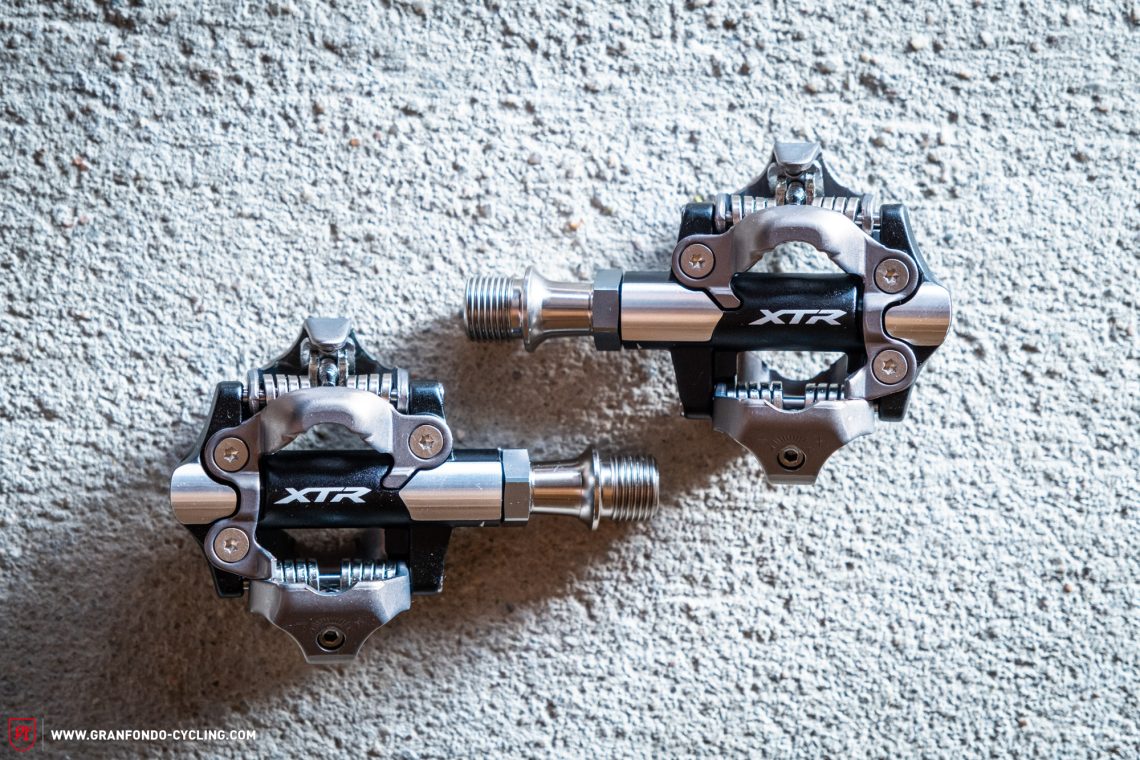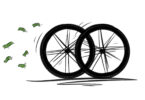Shimano pedals are by far the most common models on gravel bikes, relying on the widespread Shimano Pedalling Dynamics (SPD) system. As such, they’ve proven themselves many times over. But is that enough for the XTR PD-M9100 pedals to come out on top in our group test? We put them to the test to find out.

When people think of clipless pedals, the SPD system is usually the first thing that comes to mind. No wonder, it is tried and tested, and functional. The mechanism is so widespread that other manufacturers – such as LOOK or Acros – also use it for their pedals instead of developing their own. But have the XTR pedals got what it takes to prevail against the competition?
Low stack and high profile: Shimano XTR
The € 184.95 Shimano XTR pedals are very compact with a stack height of just 15.1 mm, though they make a very high-quality impression. Compared to the LOOK pedals, they make a significantly better impression in terms of quality and should last for a long time. That said, a long-term review should prove how durable they really are. Due to the fact that they’re so widespread, the supply of spare parts shouldn’t ever be a problem.

At 308 g, they’re the second lightest pedals on test, but if you want to save some weight, you’ll be able to get titanium axles from certain third-party providers. They’re also the most expensive pedals in Shimano’s mountain bike range. By opting for the XT variant – which wasn’t available due to supply bottlenecks – you can save yourself € 40, though these come with a 30 g weight penalty. Both models have 4° of float, a release angle of 13° and a 55 mm Q-factor as standard. However, the XTR pedals are alternatively available in a narrower version with 3 mm shorter axles. As with all SPD mechanisms, you can use them with multi-release cleats, allowing you to unclick by your feet pulling up or diagonally outwards. Ultimately, however, they present the same problems as mentioned with the LOOK pedals, which is that you might end up learning to unclick the wrong way, making it difficult to transition to regular cleats, and you can’t pull up on the pedals in a sprint. For this reason, we can’t recommend using the multi-release option if you’re a beginner.

With the Shimano XTR pedals, clicking in and out feels very defined. You’ll never ask yourself whether you’re clicked in or not. Since only the rear part of the mechanism is spring-loaded, clicking into the pedals is like clicking into skis: you hook the front of the cleat into the mechanism and then push down. The amount of force required to do so can be adjusted via the spring preload tension. In any case, it takes some practice to get used to lining the pedals and cleats up correctly and clicking in. They don’t offer a lot of float and they also feel a bit harsher than the Hope or Crankbrothers pedals. That said, the XTR pedals offer a very solid feeling connection and guarantee a sporty performance. Their self-cleaning capabilities are good enough to perform in all kinds of conditions.
| Brand | Model | Weight | Price | System | Float | Release angle | Q-factor | Stack height |
|---|---|---|---|---|---|---|---|---|
| Shimano | XTR PD-M9100 | 308 g | 184.95 | SPD | 4° | 13° | 55 mm | 15.1 mm |
Our conclusion on the Shimano XTR PD-M9100
The Shimano XTR PD-M9100 pedals are very widely used, and for good reason: they offer a compact design, sporty performance and a lot of versatility. However, they take some practice to get used to and they offer less float than the likes of Hope and Crankbrothers, which means they’re more restrictive. As a result, they can’t keep up with the Hope Union RC pedals and just miss the test victory. Nevertheless, there’s no doubt that they’re excellent all-rounders.
Tops
- sporty performance
- versatile
- easy availability of spare parts
- compact dimensions
Flops
- multi-release cleats teach bad habits
- somewhat restrictive in terms of float
- takes some practice to get used to
Did you enjoy this article? If so, we would be stoked if you decide to support us with a monthly contribution. By becoming a supporter of GRAN FONDO, you will help secure a sustainable future for high-quality cycling journalism. Click here to learn more.
Words & Photos: Simon Kohler







